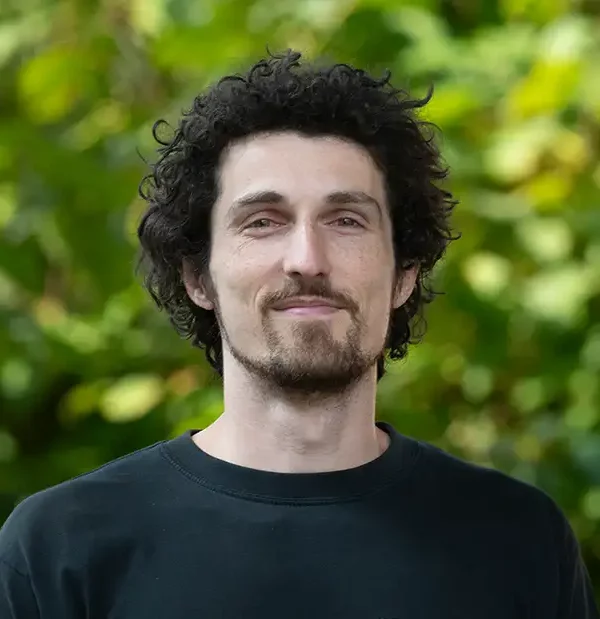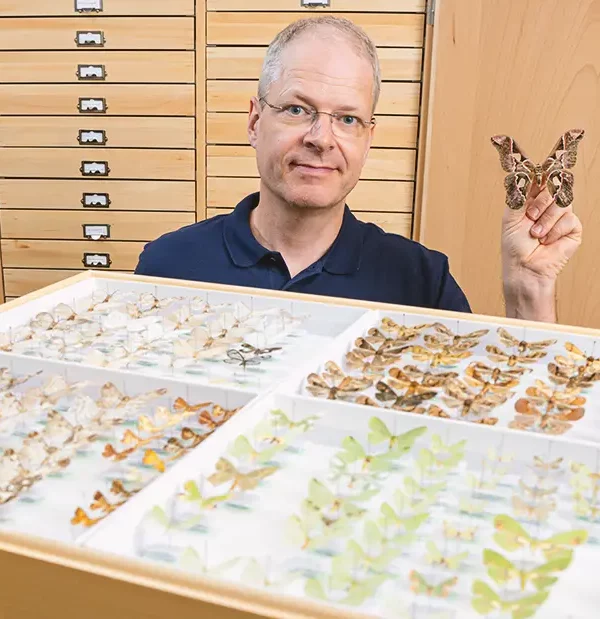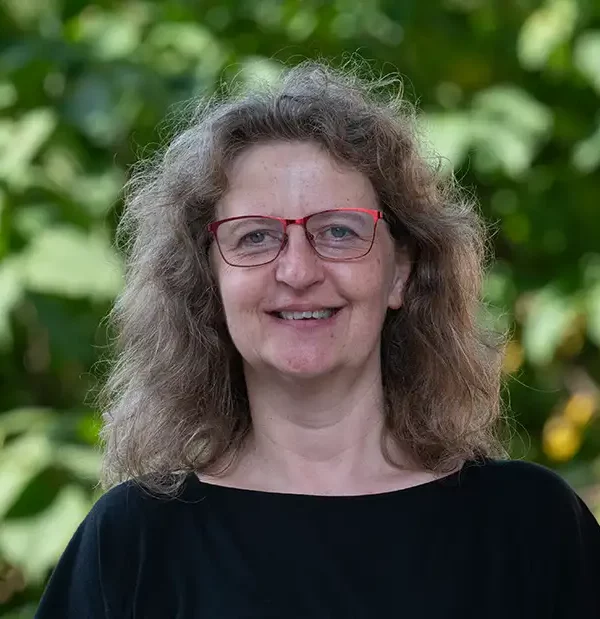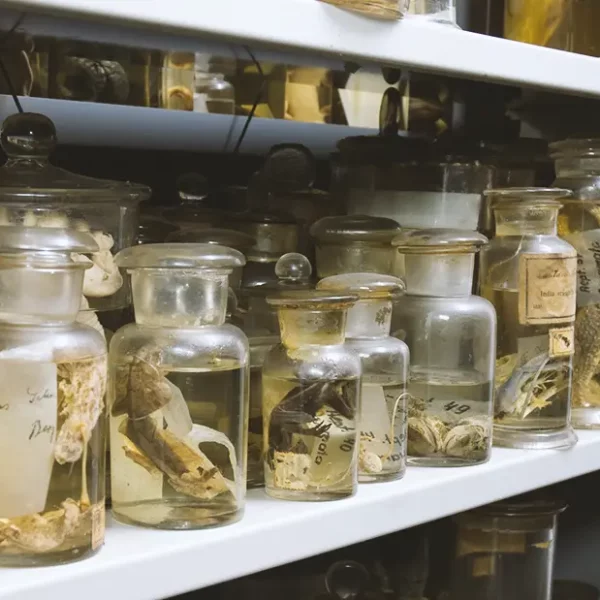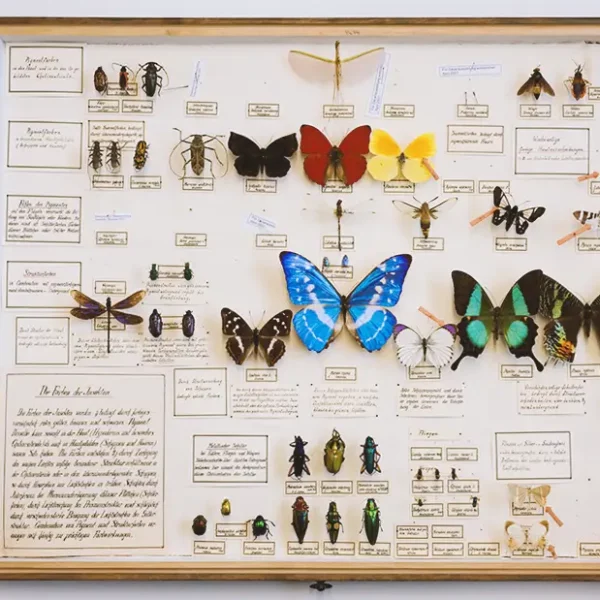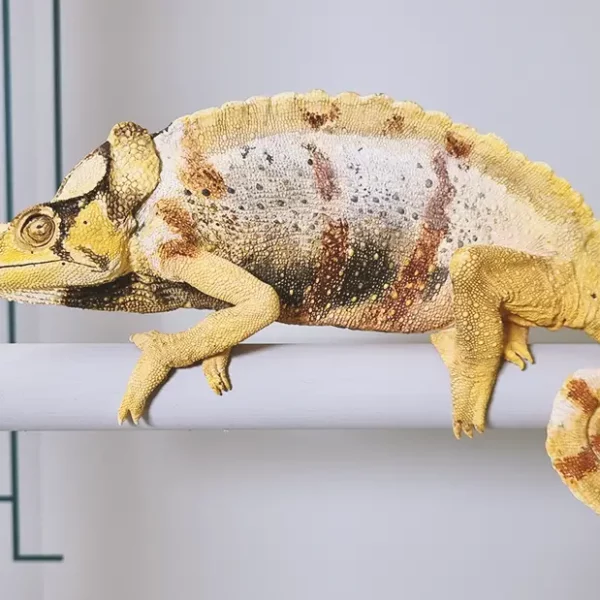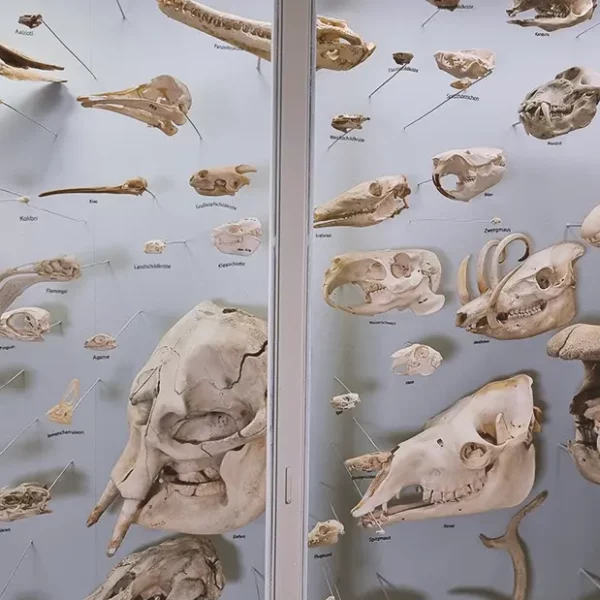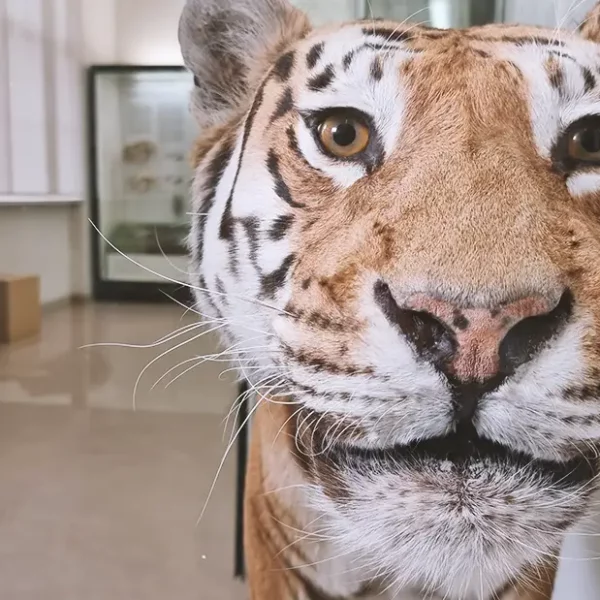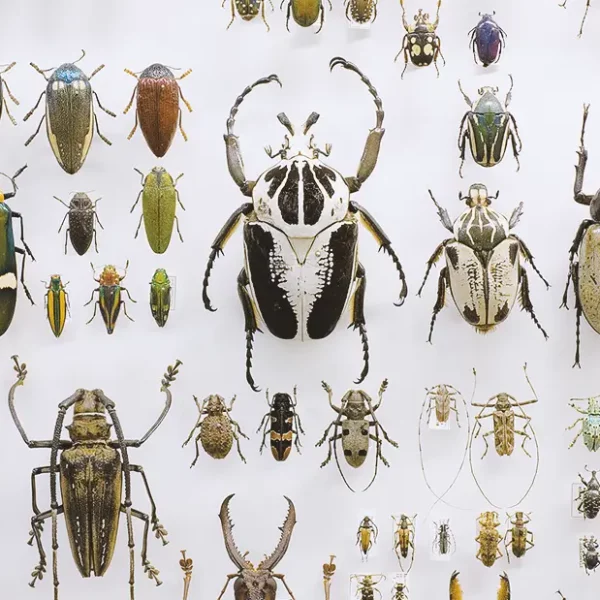Discover the traces of life
Our Zoological-paleontoological collection
THE ZOOLOGICAL-PALEONTOLOGICAL COLLECTIONS
Over a hundred years of passion for collecting
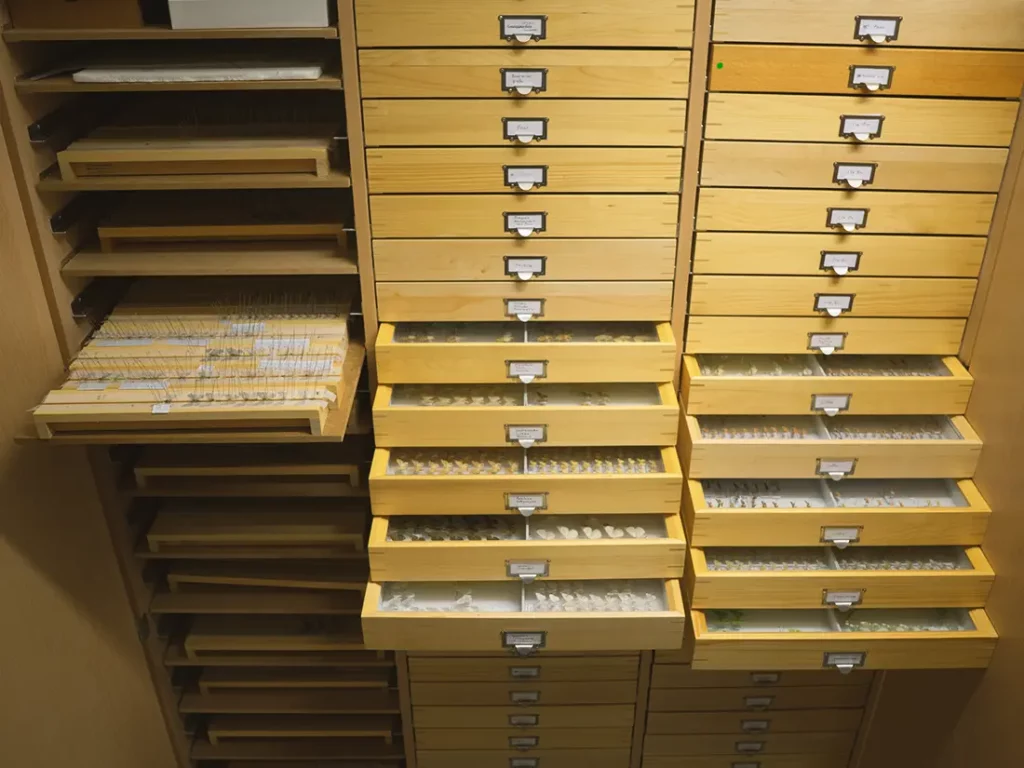
Entomology
The entomological collection comprises more than 250,000 specimens, mainly butterflies and beetles from Central Europe, including numerous species that have become rare or very rare in Germany.
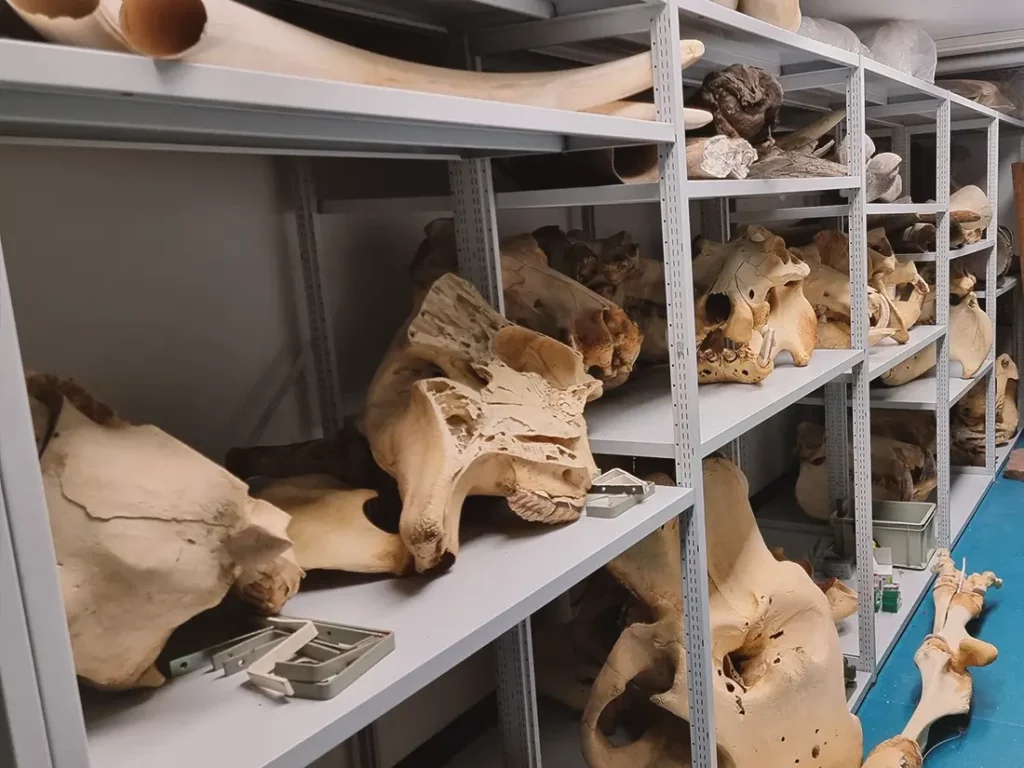
Dry collection
The dry collection contains most of the vertebrate specimens, including more than 100 wildcats found dead in Thuringia and numerous specimens found in the region. There is also a large collection of mollusc hard shells.

Wet collection
The wet collection comprises more than 2000 ethanol-filled jars from almost all animal groups. Among them are numerous historically valuable pieces with material collected by Haeckel and other zoologists of his time.
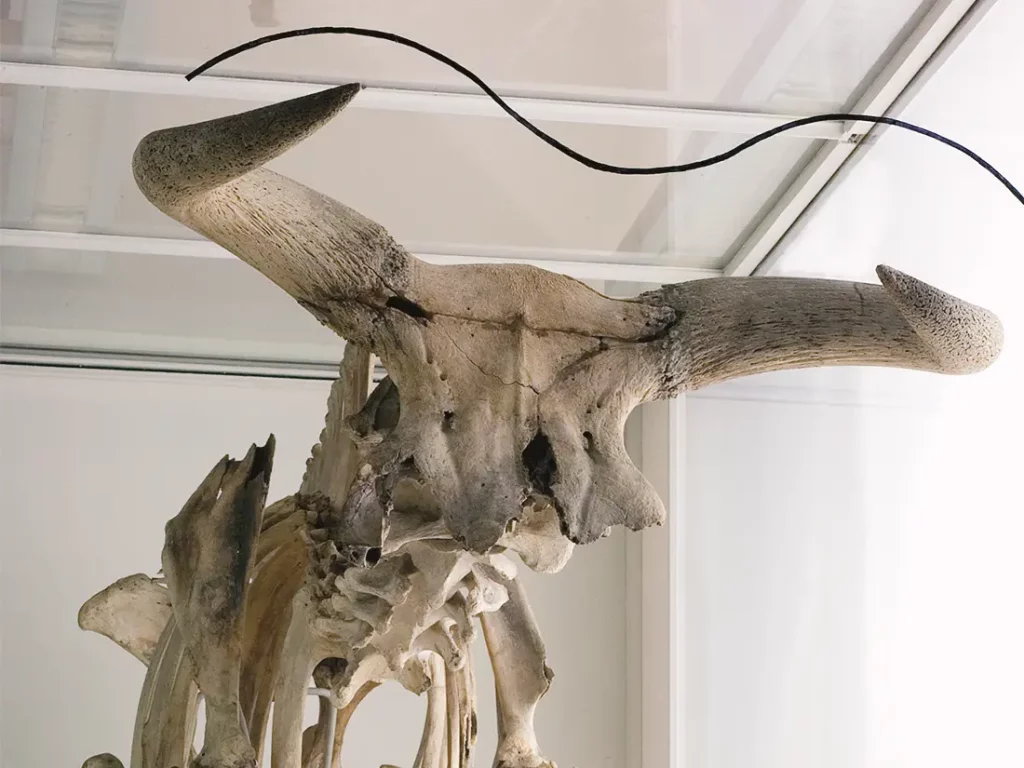
Fossil collection
The fossil collection contains numerous finds from the Jena region, but also finds and type specimens from the world-famous Bromacker (Thuringian Forest). Goethe’s Fossil Bull also belongs to this part of the collection.
History
From collecting to the collection
YOUR CONTACTPARTNER
Would you like to borrow collection items for exhibitions, research or other purposes? Find out how to proceed.
The history of the collections begins in 1700 after the palace fire in Weimar with the purchase of part of Christian Lorenz von Adlershelm’s natural history cabinet by Duke Wilhelm Ernst von Weimar, who reigned from 1683 to 1728. Some of the particularly attractive pieces on display in today’s exhibition, such as the whale bones, date from this period. These pieces were initially housed in the art and natural history cabinet in the palace in Weimar, but were expanded through the purchase of fossils, which are also in our collection, and moved to rooms in the city palace due to lack of space, forming the basis of the Ducal Museum in Jena. In 1779, the Walch Natural History Cabinet was purchased by Duke Carl August of Saxe-Weimar. In 1839, the museum – now also increasingly used for teaching – comprised 2,073 collection numbers, including 39 mammal and 524 bird specimens.
Goethe had a direct influence on the institution for many years. From this period and the first years of the Kunstkammer, the Phyletisches Museum still has fossils, whale bones and the skeleton of the aurochs, which Goethe also worked on and which served Bojanus in 1827 as the basis for his first description of the primeval bull Bos primigenius.
In 1850, under the direction of Oscar Schmidt, it was separated from the “Mineralogical Cabinet”. The “Zoological Museum” thus became an independent institution. Its later director Ernst Haeckel founded the Phyletic Museum in 1907. The collections underwent an enormous expansion under the directorship of Haeckel, who brought in his extensive collections from the Red Sea, Indian Ocean and Ceylon (Sri Lanka). This was later followed by the expedition yields of Richard Semon (Malay Archipelago and Australia), Ludwig Plate (Ceylon) and Jürgen Harms (Java and Sumatra). In addition, there were purchases and donations of insect, conchilla and fossil collections. Type material is mainly found among the expedition spoils.
As Ernst Haeckel initially had the Phyletic Museum built without storage rooms, only some of these collections were housed in the museum. The majority remained in the rooms of the Institute of Zoology. This situation only began to change during the redesign of the display rooms of the Phyletisches Museum in the years 1956-1963 under Professor Manfred Gersch as director, when a room on the upper floor was set up for the insect collections, which had grown considerably in the meantime. A further significant influx of material took place after 1969 with the acquisition of extensive zoological-palaeontological collections from other university institutes of the Friedrich Schiller University. At the same time, it was possible to start building up the scientific collections as planned. Since then, under the collection management of Dr. Dietrich von Knorre, great progress has been made in organizing the existing holdings, recording them scientifically and making them accessible for research and teaching.
Following the conversion of cellar rooms into collection rooms in recent decades, the former janitor’s apartment was completely renovated and equipped with a large lever–arch system in 2000 following the donation of Europe’s largest private vertebrate collection by Prof. Dr. Dr. Dietrich Starck (Frankfurt am Main). This provides high-quality storage for the “dry” vertebrate collection on almost 2000 meters of shelving.
Foundation
Collection items
Insects
Mammals
Birds
Insect arrivals per year
